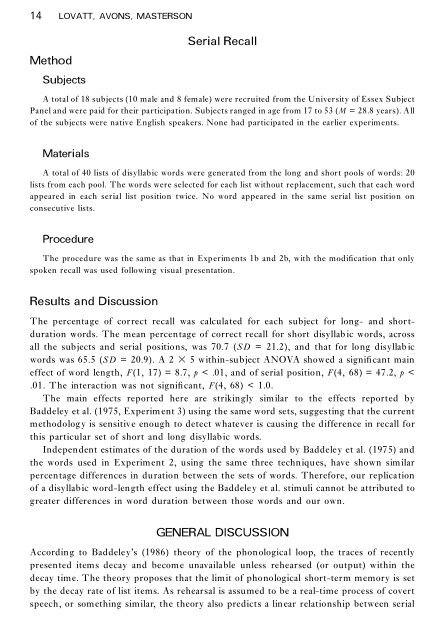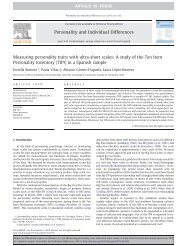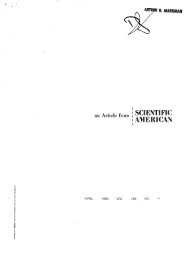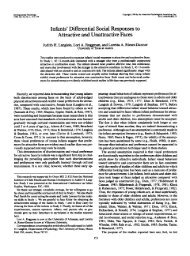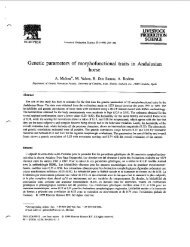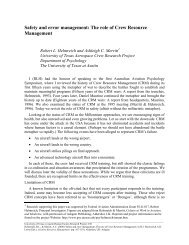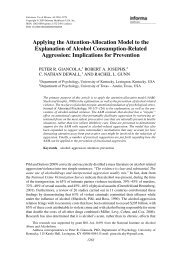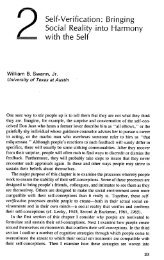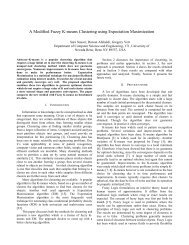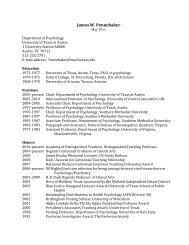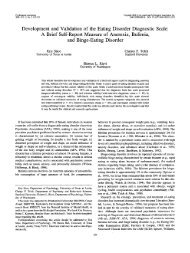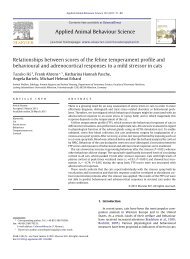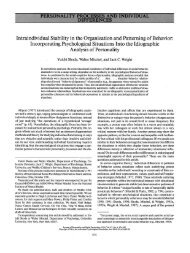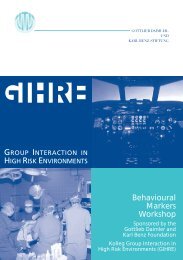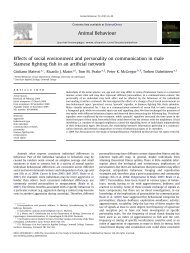The Word-Length Effect and Disyllabic Words (Lovatt
The Word-Length Effect and Disyllabic Words (Lovatt
The Word-Length Effect and Disyllabic Words (Lovatt
You also want an ePaper? Increase the reach of your titles
YUMPU automatically turns print PDFs into web optimized ePapers that Google loves.
14 LOVATT, AVONS, MASTERSON<br />
Method<br />
Subjects<br />
Serial Recall<br />
A total of 18 subjects (10 male <strong>and</strong> 8 female) were recruited from the University of Essex Subject<br />
Panel <strong>and</strong> were paid for their participation. Subjects ranged in age from 17 to 53 (M = 28.8 years). All<br />
of the subjects were native English speakers. None had participated in the earlier experiments.<br />
Materials<br />
A total of 40 lists of disyllabic words were generated from the long <strong>and</strong> short pools of words: 20<br />
lists from each pool. <strong>The</strong> words were selected for each list without replacement, such that each word<br />
appeared in each serial list position twice. No word appeared in the same serial list position on<br />
consecutive lists.<br />
Procedure<br />
<strong>The</strong> procedure was the same as that in Experiments 1b <strong>and</strong> 2b, with the modi®cation that only<br />
spoken recall was used following visual presentation.<br />
Results <strong>and</strong> Discussion<br />
<strong>The</strong> percentage of correct recall was calculated for each subject for long- <strong>and</strong> shortduration<br />
words. <strong>The</strong> mean percentage of correct recall for short disyllab ic words, across<br />
all the subjects <strong>and</strong> serial positions, was 70.7 (SD = 21.2), <strong>and</strong> that for long disyllab ic<br />
words was 65.5 (SD = 20.9). A 2 3 5 within-subject ANOVA showed a signi®cant main<br />
effect of word length, F(1, 17) = 8.7, p < .01, <strong>and</strong> of serial position, F(4, 68) = 47.2, p <<br />
.01. <strong>The</strong> interaction was not signi®cant, F(4, 68) < 1.0.<br />
<strong>The</strong> main effects reported here are strikingly similar to the effects reported by<br />
Baddeley et al. (1975, Experim ent 3) using the same word sets, suggesting that the current<br />
methodology is sensitive enough to detect whatever is causing the difference in recall for<br />
this particular set of short <strong>and</strong> long disyllabic words.<br />
Independent estimates of the duration of the words used by Baddeley et al. (1975) <strong>and</strong><br />
the words used in Experiment 2, using the same three techniques, have shown similar<br />
percentage differences in duration between the sets of words. <strong>The</strong>refore, our replication<br />
of a disyllabic word-length effect using the Baddeley et al. stimuli cannot be attributed to<br />
greater differences in word duration between those words <strong>and</strong> our own.<br />
GENERAL DISCUSSION<br />
According to Baddeley’s (1986) theory of the phonological loop, the traces of recently<br />
presented items decay <strong>and</strong> become unavailable unless rehearsed (or output) within the<br />
decay time. <strong>The</strong> theory proposes that the limit of phonological short-term memory is set<br />
by the decay rate of list items. As rehearsal is assumed to be a real-time process of covert<br />
speech, or something similar, the theory also predicts a linear relationship between serial


